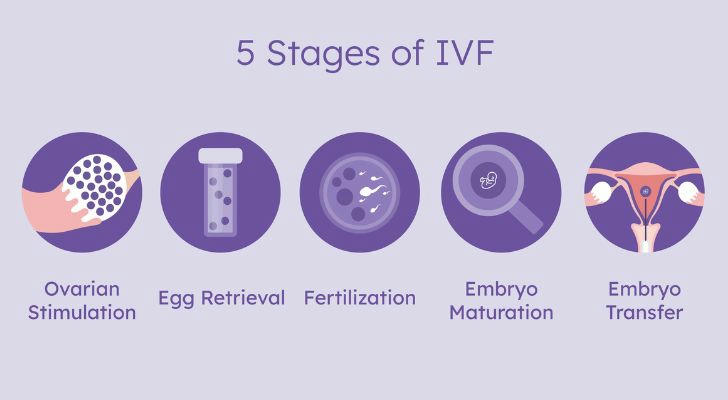Guide to IVF (In Vitro Fertilization) in the United States: Costs, Success Rates, and Financial Assistance
In the U.S., IVF is a widely used assisted reproductive technology that helps families facing infertility realize their dream of parenthood.
This article covers costs, success rates, influencing factors, and insurance policies, and provides information about financial aid resources to Illuminate your journey of creating little miracles.

🌸 What is IVF?
IVF is a process where eggs and sperm are combined in a laboratory to create embryos, which are then transferred to the uterus for implantation and pregnancy. It is suitable for people with:
- Blocked or damaged fallopian tubes
- Low sperm quality or quantity
- Ovulation disorders
- Unexplained infertility
- Need for embryo genetic testing (PGT)
💰 IVF Cost Overview in the U.S.
Costs vary depending on clinic location, doctor experience, and additional procedures:
| Item | Price Range (USD) | Description |
|---|---|---|
| Basic IVF cycle | $12,000 – $18,000 | Includes egg retrieval, fertilization, one embryo transfer |
| Medication fees | $3,000 – $6,000 | Hormone stimulation and support |
| Embryo freezing storage | $500 – $1,200/year | For preserving extra embryos |
| Genetic testing (PGT) | $3,000 – $7,000 | Screening for genetic abnormalities |
Note: Some states require insurance to cover infertility treatments, including IVF. Check your state's regulations and insurance policies.
🌟 Success Rates and Influencing Factors
According to CDC and SART data:
- Women under 35: live birth rate per cycle is about 45%–55%
- Ages 35–40: about 30%–40%
- Over 40: drops to 10%–20%
Factors affecting success include age, ovarian reserve, sperm quality, embryo quality (including use of PGT), medical history, and lifestyle.
🌼 Who Has Higher IVF Success Rates?
Based on reproductive medicine data, the following groups tend to have higher success rates with IVF:
- Women under 35 with good ovarian function and egg quality
- Normal ovarian reserve indicators (e.g., AMH and FSH levels)
- Healthy uterine environment without major abnormalities
- Normal sperm quality ensuring successful fertilization
- Healthy lifestyle habits such as no smoking, moderate exercise, and healthy weight
Women meeting these conditions have significantly higher chances of pregnancy with IVF, helping more families achieve their dreams.
🛡️ Insurance and Financial Assistance
- State law varies: About 21 states have mandates for infertility insurance coverage, some including IVF.
- Employer benefits: Some large companies and medical institutions offer IVF coverage to employees.
- Other options: Nonprofit grants, clinical trials, and payment plans.
💞 Nonprofit Financial Assistance
IVF can be expensive, but many nonprofit organizations provide grants and aid to qualified families, easing financial burdens:
- Cade Foundation Family Building Grant: Up to $10,000 for fertility treatment or adoption support.
- Journey to Parenthood: Up to $10,000 in financial and emotional support.
- Gift of Parenthood Foundation: Covers IVF, IUI, egg/sperm donation, and egg freezing costs.
- Parental Hope: Provides full IVF or frozen embryo transfer cycle grants annually.
- Angels of Hope: Offers up to $15,000 IVF grants for specific areas.
Additional programs support cancer survivors, military families, and specific communities. Crowdfunding and employer benefits are also viable options.
🏥 Choosing the Right Clinic
Consider these when selecting an IVF clinic:
- Registration and published success rates with SART
- Doctor qualifications and experience
- Transparency of treatment plans and fees
- Patient reviews and service quality
⚠️ Risks and Considerations
- Ovarian hyperstimulation syndrome (OHSS)
- Multiple pregnancy risks
- Miscarriage and premature birth rates
- Side effects of hormone medications
Always discuss your health and risks thoroughly with your doctor before starting treatment.
Disclaimer: This article provides general information and a summary of available resources and does not constitute medical or legal advice. Grant qualifications, amounts, and procedures may change over time. Please verify details directly with organizations and consult qualified medical and financial professionals to develop a personalized plan.
